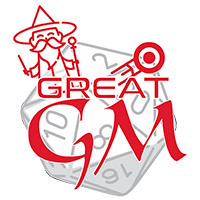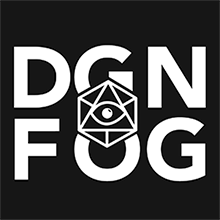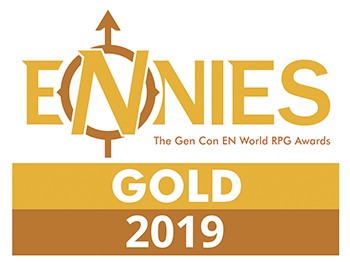“Owning the details is a primary to being a leader. But there are millions of stuffed politicians out there with lots of facts in their quivers and little leadership potential. Usually what they are missing is empathy. No one is a leader who can’t stand in another’s shoes” - Anonymous, Annals of the Swords.
“Do this, Crafty. Do that, Crafty. Take this over here, Crafty. Put this over there, Crafty. Everyone around here likes to give orders but when the fucking mages start popping off shriekers and dropping boils, there also usually the ones high-tailing their sorry butts to the rear. I don’t like them. At all.” - Crafty, Aster Team, 2nd of the C4.
*****
...that old long known adage that perhaps the only thing that keeps the feet of Fomori on the ground, however tenuous, are the Jotinar. And perhaps the only thing that can move the feet of the Jotinar, however firmly planted, are the Fomori.
As previously noted, two confounding moments in the history of these wonderfully diverse and intriguing cousins, as it were, are what is known concerning their origins and why and when the divergence occurred sending the two relatives along their own paths.
In the next two chapters I will delve deeply into these conundrums. Each chapter will look at the mythology and unique history, mostly well past the moments that, even for the Jotinar and the Fomori, have been lost to time. Old manuscripts, uncovered artwork from historical digs as well as the tales passed down through generations are all we have left. (author’s note: mostly from the Jotinar, the Fomori rarely write anything down and make no effort to maintain the integrity of a story across generations. When they do it is often difficult to determine exaggeration from tall-tale from complete make-believe.)
But this introduction should help to put a framework around the deeply complicated and contested topic and, hopefully, ease the difficulty with which the reader shall certainly find themselves.
What follows are portions of perhaps the oldest known written manuscript we have found to date. It is housed in the The Odeum of Tychusia in Solyn, one of the land's majestic great wonders.
Written, in this instance, is an unfortunate misnomer that is the closest translation to the manuscript. The foundation of Jot, the written language that both the Jotinar and Fomori use, can be witnessed within its structure and syntax but it is vastly different and in many cases cryptic pictographs are used to convey meaning within the context of the self-described Teatrico.
A dedicated collection of scholars over the last fifty years, since its discovery, have worked tirelessly and have devoted all of their time to this singular task.
This is the introductory segment of the manuscript and is a direct result of extraordinary scholarship. However, caution is advised in its incomplete state and most inevitably will contain factual errors that have yet to be identified. All attempts have been made to place certain elements in the appropriate context but portions of the manuscript may have an addendum included (abbreviated as [add.] for brevity.)
witness
walkers, flyers
witness
eyes, see’er
clang
wind
salt
fire
witness
stonefist approaches
forge glows
dancer moves
staccato sweeps
arms grace
sun, heat
Stonefist
here by hand
flame and sea
Dancer
song sung
sting [of] spray
crack [of] heat
Stonefist
shadows [cannot] hide
from fire
Dancer
stain [of/by] Devourer
washed clean
add. Dance and Stonefist were names that had a long standing significance within Jotinar and Fomori societies, as the gods Naramis and Orsetiun respectively. But it wasn’t until a recent breakthrough, by Oleron of Talinor, that the word/pictograph naming the Devourer was translated. The inclusion of one of the Banes has caused a great deal of trepidation within esteemed communities as the written names of the Banes are said to offer a means for them to return to our world (see collected works v.3 for details on the predilections and predictions of the gods.)
Dancer
sound [of] hammer
ringing steel
others create
others make
others take
Stonefist
breathe wind
crashing waves
others call
others rejoice
others fall
add. The following two pages are sketches that appear to depict an elaborate pantomime of sorts that seems to indicate the creation of the world. Of particular note are the beings depicted across the numerous panels of the two pages.
Three of the figures are clearly indicative of the All-Father, the Madzi Witch and Him, the guide of the dead. Three of the other four are also identifiable as representations of Human, Samada and Nosck as there has not been any great physical shift in the characteristics of these people.
The last, however, is most curious. It is a towering giant nearly a half-length taller than the tallest Nosck. A large heavy head slightly too big for the build of the body, thick arms and legs with a round, heavy, slightly stooped, torso. A heavy, dense beard shapes its face, though the head appears to be bald. Is this the predecessor of the Jotinar and Fomori who appear to have no other character within the art? No records contain references to such a being directly though there are certainly numerous fairy tales and stories to frighten children about giants in the night.
witness
dancer
stonefist
hand
foot
mind
heart
collide[join/merge]
witness
dancing stone
fist [of] Song
creation born
working, wonder
wonder, trial
wonder, made
Stonefist
hammer, iron
mind, matter
Dancer
mong and steel
life made
life found
Stonefist/Dancer
Kauros
The last word is utterly foreign in translation. There is simply nothing analogous within the Jot tongue or any other known language. Is it a name? Is it an action?
This seems an appropriate moment to bring up a topic that will be covered in more depth in the following two chapters. The confluence between Jotinar ingenuity and Serinnian invention.
It has long been a heated topic of debate that the craftsmanship of the Jotinar and the creative thinking of the Fomori were instrumental in numerous advancements. The magic of the River, or the Miasma, or the Forge or the Conflagration or the many other names it is given around the world, has always been unpredictable at best. This is readily witnessed within the separate Jotinar and Fomori. As mentioned, there are no known records before this time, or even within several thousand years of it being mentioned. This leads to the speculation of what marvels these two, as one, must have done together before. It also begs the question, was this potentially something that may have been at the root of this sundering?
Over the last millenia, it is well documented that the two people slowly began to drift apart. More Fomori were leaving the confines of Valeria. Escaping the drudgery as many were known to say. The Jotinar began to plant there feet even more, extending the roots of their homelands now down into the hearts of the mountains themselves rather than outwardly along their face as they had once done.
If one follows a thesis of cause and effect, it is also essentially to recognize that consecutively as these two were drifting apart the great inventions and innovations of the Jotinar began to wane. Without the creative inspiration of the Fomori the box tended to close around them. The Fomori wandered further and further, aimlessly with no thought to the future. Without the roots and traditions of the Jotinar their purpose seemed to drift away like clouds.
Neither have been able to keep up with the Serinnian Empire. Not theFomori as they expanded outward nor the Jotinar in their inventions. That gap has widened even further with the inclusion of the “free” Samada, a people who were once steeped in bending Skyfire, their name for the River, and the breaking of the Great Horkos.
It is curious that the fading of one occurs as the other rises.
The Jotinar have no love for the Forsaken/Free Samada, nor the Serinnian Empire. They have made claims that many of the inventions the Empire has pushed forward were stolen from their own Master Builders. The Serinnian’s abjectly deny such allegations and also point out the Jotinar are free to bring forth their own. The Jotinar seem to have no way to keep up with the production capabilities of the Empire. (see v.4, “What is at the Heart of the Empire.”)
witness
hands entwined
dancer, stone
creation made
knowing
great walk
long dance
bang
clang
air
fire
water
earth
one
add. The introduction ends with a single page of a large mural of Dancer and Stonefist creating a near perfect circle that makes it indistinguishable where one ends and the other begins.
As is no doubt apparent the beauty of the text, both forceful and graceful, appears to be representative of the inherent nature of the Jotinar and the Fomori. What may have escaped the attention, however, in the poetry of “metaphoria” (a Samada word meaning ‘transfer’ or ‘transform’) is the traits often slip across the narrative between our two central characters Stonefist and Dancer.
This is one of the foremost connections that appear to confirm the beliefs of both the Jotinar and the Fomori that they derive from one people, yet alas, as previously stated, even the records of the stalwart and methodical Jotinar go back only so far into the past.
The delights and rich context of this magnificent text holds secrets that at the place we have arrived in our scholarship it is certain we have only gleaned a small portion.
Perhaps only the gods themselves shall ever know.
- excerpt “Iron and Water”,
Na Hastas Kyra, scholar, mage, traveler,
from his collected work, “Journeys.”







